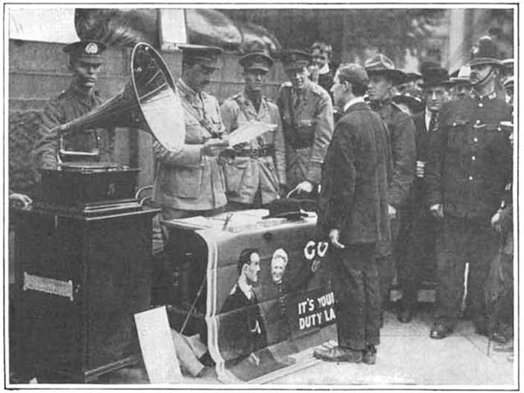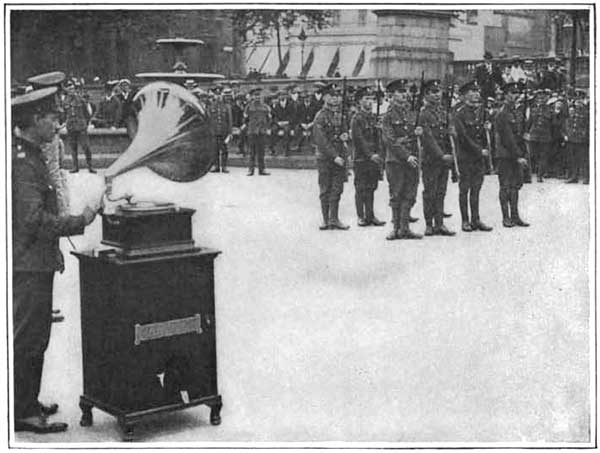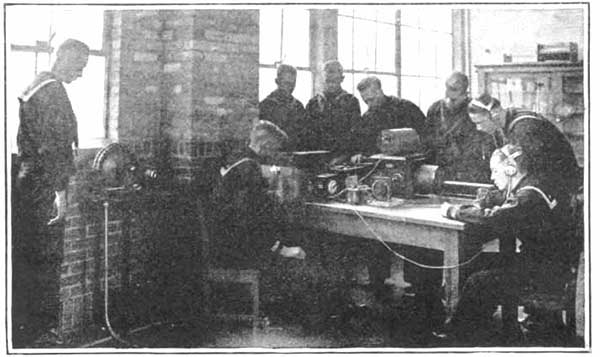Thomas Edison invented the Phonograph in 1877: a handy tabletop device that could play music for a small group of listeners. By 1915 the phonograph (now with a small “p” as a generic name) was a moderately pricey luxury—an average working man could buy a good model with a month’s wages. Reported in Scientific American, November 6, 1915

In 1915, after a year of war in Europe, the phonograph was pressed into military service. In Scientific American, a recruiting stand in the United Kingdom has one device sitting next to a poster that says “Go! ... It’s your duty lad” (the country did not yet have the draft, and so relied on the patriotism and conscience of volunteers to fill its military ranks). In the other image, a phonograph is being used to bark commands at a display drill. Given the lack of electronic amplification, the soldiers would have had to listen quite carefully. The machine in both cases actually looks like a gramophone made by the Victrola company—one of the couple of hundred manufacturers in the business.
There’s also a photo from late 1917 taken at the U. S. Naval Training Station at the Dunwoody Industrial Institute in Minneapolis: a phonograph is making up for the severe shortage of instructors, in the rapidly expanding military forces, to teach navy recruits the basics of wireless telephony.

In late 1917, after the U.S. had become involved in the war, naval recruits are instructed in radio operation by a phonograph, at a time when military forces were expanding rapidly and knowledgeable instructors were in short supply.

In popular memory, though, the phonograph is best known as a solace from home for soldiers and sailors on active duty. The October 28, 1918, issue of the Independent-Harper’s Weekly, describes them (one was called “Maggie”) as a cherished companion of soldiers and sailors, playing the same few records over and over and helping to while away the stifling boredom (and occasional terror) of duty aboard a ship or in a dugout. So great was the demand for the phonograph and records, that October 28 to November 2, 1918 (just before the end of the war), was designated as “slacker record week” in the U.S., where committees of citizens collected record disks that were not being used and sent them to the armed forces overseas.
Courtesy Scientific American



